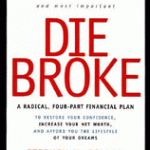Some folks called it retirement savings. We prefer financial independence. What’s in a name? Well, which of those two terms give you a feeling of freedom, uplift and excitement about the rest of your life? Lots of ways to get that happy state, including voluntary belt-tightening when it doesn’t seem necessary, the millionaires’ secret to having and keeping wealth. Here are two mind-altering perspectives: Your Money or Your Life by Joe Dominquez and Vicki Robins  and Die Broke: A Radical Four-Part Financial Plan by Stephen Pollan and Mark Levine.
and Die Broke: A Radical Four-Part Financial Plan by Stephen Pollan and Mark Levine.
Getting your financial house in order is also knowing where your money is coming from, and the chances are some of it will come from Social Security which you’ve been funding with your payroll taxes. Here’s a handy new calculator courtesy of your government, that will give you a base line of what you can expect, and a heads up if you are even contemplating quitting early. OK, Social Security may not cover all your anticipated expenses — although we know of an avid biker in Texas who manages to save enough from his Social Security payments to travel to Italy every year — but a monthly income you can count on, however modest it may seem, is a nice little cushion and a good place to start.
If some of the scary coverage about Social Security makes you wonder whether it will be there for you when you need it, read this earlier post.


